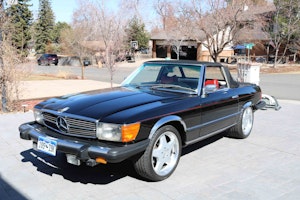Media | Articles
Ferrari is trying to save its naturally aspirated V-12
Quite a lot was revealed about Ferrari’s future at this year Geneva Motor Show. As far as hybrid power, the V-8-powered SF90 Stradale is already out as the brand’s most powerful road car to date, while in the SUV field (whether you like it or not) the Purosangue is now inevitable. Yet Ferrari also promised to keep its flagship V-12s naturally aspirated, suggesting that hybridization is off the table regarding that powertrain, probably because front-engine super GTs aren’t driven like LaFerraris.
Now, via Pistonheads, we’ve got a concrete glimpse into Ferrari’s plans, through a number of technical drawings sent to the U.S. Patent and Trademark Office.
20191028142354)
According to the submission, Ferrari tells the Patent and Trademark Office the following:
“To obtain an engine that operates well during cold running, the strategy commonly known as spark coupled injection has been developed. With this strategy, a small injection of fuel is made in each cylinder just before production of the spark by the spark plug, thus generating turbulence near the spark plug at the critical moment of ignition of the air-fuel mixture. Advantageously, the engine further comprises for each cylinder a pre-chamber…with a second spark plug to selectively determine the ignition of the mixture present in the pre-chamber and for triggering the combustion reaction.”
Marketplace
Buy and sell classics with confidence
All this translates to an altered injection pattern and new induction pre-chamber, which should speed up the airflow and create a hotter air-fuel mix to boost efficiency without compromising performance.
When it comes to internal combustion engines, emissions produced after a cold start continue to be a major challenge for automakers. Those peak figures triggered Ruf’s decision not to pursue installing its prototype RGT-8’s flat-plane V-8 into series production, and I’ll let you guess the main factor delaying AMG’s F1-engine hypercar, the One.
With this clever upgrade for its 6.5-liter V-12, Ferrari is clearly working towards heating up the catalytic converters faster, while the twin-spark ignition makes for cleaner, more accurately controlled combustion. Other tricks used by the industry nowadays include shutting off the water pump, so it doesn’t circulate the coolant in the cylinder head after a cold start. Just ask Lamborghini-parent Audi.
Speaking of the devil, Lamborghini believes tweaking its V-12 won’t be enough, and so the Aventador’s successor will likely be a traditional mild-hybrid, albeit without a supercapacitor like the Sián FKP 37.
Either way, both V-12s are here to stay through at least the first half of the 2020s. Which is brilliant news.
20191028142349)
20191028142359)








20191028142403)
20191028142408)
20191028142415)
20191028142421)
20191028142427)

